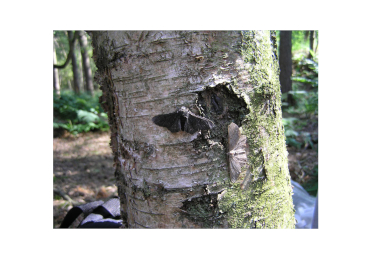Peppered Moths Again and Again
Romans 1:21-22
“. . . because that, when they knew God, they glorified him not as God, neither were thankful; but became vain in their imaginations, and their foolish heart was darkened. 22 Professing themselves to be wise, they became fools,”
 Every so often, we need to return to the topic of peppered moths, which we have featured a number of times before. Previous Creation Moments have explained why Peppered Moths are not an example of evolution, and how, in the 1980s, it was found that the famous photos showing light and dark moths on light and dark tree trunks had, in fact, been staged. The moths do not normally settle on the trunks, so the photos were taken by gluing dead moths on to the trees.
Every so often, we need to return to the topic of peppered moths, which we have featured a number of times before. Previous Creation Moments have explained why Peppered Moths are not an example of evolution, and how, in the 1980s, it was found that the famous photos showing light and dark moths on light and dark tree trunks had, in fact, been staged. The moths do not normally settle on the trunks, so the photos were taken by gluing dead moths on to the trees.
What we want to note at the moment is that teachers continue to perpetuate the peppered moth myth. One evolutionist has stated that this is because the concept of what happened to these moths is easy to understand, and more recent studies have suggested that the population of dark moths is indeed higher in urban areas than that of light moths.
As creationists have often pointed out, this is not really the point, because, even if the accounts were correct, this is not an example of Darwinian evolution, as no new genetic information has been made. It is, however, an example of bad experimental technique, led by a desire to prove a particular outcome, rather than genuine investigation.
It is disturbing, therefore, to look at that portion of the BBC’s website, where they publish notes for high school students. An up to date science review page for students, with the heading “Evidence for Evolution”, once again publishes the faked moth photos. For us, this constant re-publication of error aptly illustrates the paucity of evolutionary science.
Prayer: Your word, O Lord, is always true. We thank You that Your word is a lamp to our feet and a light to our path. We pray that we might constantly follow You, in all that we do, seeking to glorify Your Name. Amen.
Author: Paul F. Taylor
Ref: BBC Bitesize Science notes, accessed 4/25/2017
© 2022 Creation Moments. All rights reserved.